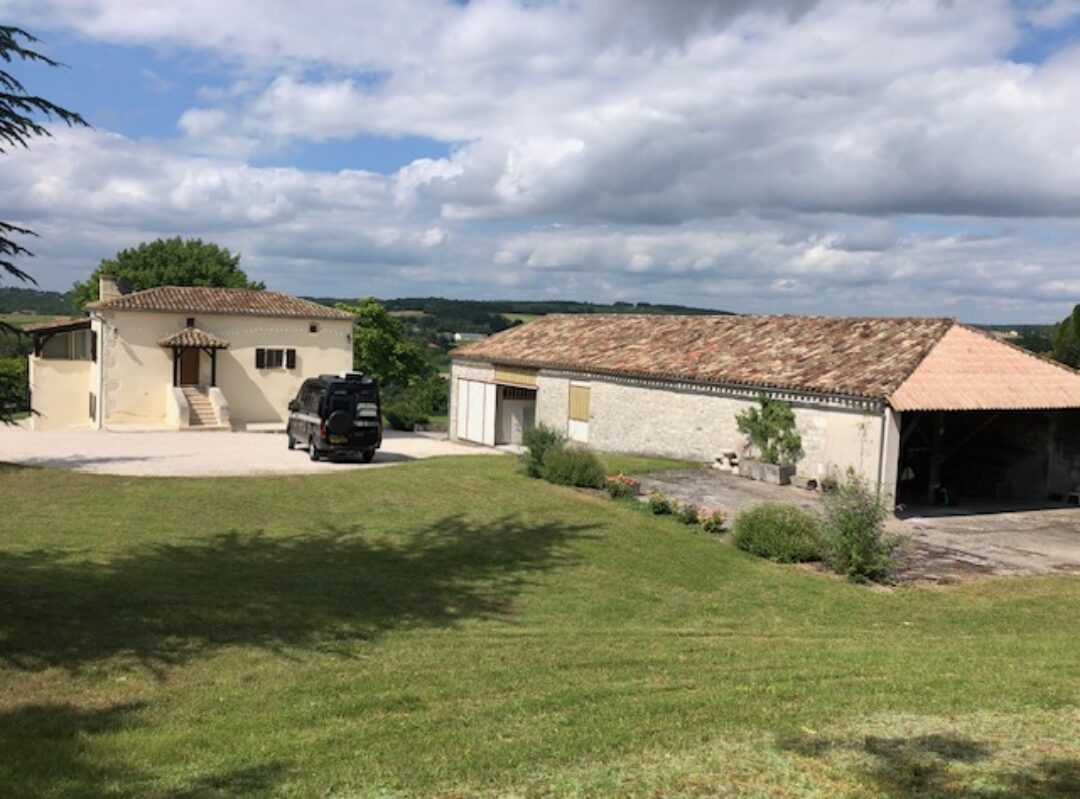We’re in the heart of wine country here so we can’t miss the opportunity to check out some of the produce. First to the east and the Monbazillac region south of Bergerac which is famous for its sweet white wines. The village of Monbazillac and Chateau de Monbazillac were our destination for a day out and the journey there took us through a completely different landscape to what we’ve seen recently, with manicured vineyards the only crop in sight. The 16th century chateau, sitting in terraced grounds that give onto a great view over the Bergerac valley, is now owned by the wine co-operative of Monbazillac and entry to the chateau includes a wine tasting at the end.



The interior of the Château is interesting with rooms displaying 17th century life, craft activities of the Bergerac region (clog making, rope making, cooperage and making of cart wheels) as well as temporary art exhibitions and work of artists of the region. One room featured the prints and drawings of the Périgord cartoonist George’s Goursat, known as Sem. Copies of his drawings may be familiar to those in the UK as well, in particular his drawing that featured on the menu of the famous Maxim’s restaurant in Paris. One room is dedicated to Protestantism as the Château was a centre for this religion when the Reformation spread through the Périgord region. Only the first two families who occupied the Château from the 16th century were catholic – all other families who live there until 1960 (when the chateau was bought by the wine co-operative) were Protestant.
The basement rooms feature an exhibition of bottles, wine making equipment and also explain the process of making this particular wine. Only wine made from grapes grown in Monbazillac that are affected by a particular microscopic fungus called ‘noble rot’, which gives the grapes their sweetness and aroma, can be given the Monbazillac AOC designation. The main varieties of grapes used to make the wine are Muscadelle, Sauvignon and Semillion and the harvesting of these grapes doesn’t take place until October, much later than white grapes for other wines which are often harvested from early September.
At the wine tasting after the Château visit we were able to taste four wines and opted to try two of the Monbazillac sweet white wines (a doux and a liquoreux), a Bergerac rosé and a Pécharmant red wine from the north of Bergerac. We enjoyed all of the wines and in particular the Monbazillac whites and were able to purchase some to take with us.

So having explored the white wines of Monbazillac, we headed west to try some red wines. Where else to go other than the village of Saint Emilion, a name synonymous with great wines. In order not to hamper our ability to try some wine we decided to ‘let the train take the strain’ with a short journey from Sainte Foy to Saint Emilion. From the station at Saint Emilion it’s a short walk through beautiful vineyard landscape to the village, although we could have taken the tuk tuk service if we’d wanted. The medieval village which stretches up a hill is named after Emilion, a monk from Brittany who fled from his hometown to seek refuge in one of the natural caves of the village in the 8th century. Living the life of a hermit he accomplished a few miracles and became famous in the region. Soon he had many disciples and the village became a great religious center and after his death his followers named the town after him.

Today the village is all about the sale of the wines from the surrounding vineyards, with every business being either a restaurant/wine bar, wine retailer or art/craft shop. It’s hard to get a feeling for where ‘normal’ day to day life goes on in this village. These businesses are set against the amazing backdrop of the medieval buildings of the village including ‘Le Tour du Roy’ the cloisters and the monolithic church, whose lower parts were apparently carved from one rock. Some of these buildings are reached via ‘Tertres’ – the original steep and narrow unevenly cobbled streets. The views, both over the village and the surrounding countryside, as you climb higher up in the village are reward for the effort.
Other products that feature in the village are the Macarons de Saint Emilion – macaroon biscuits rather than the coloured, cream filled macarons that have become popular – and the Canelés de Bordeaux. These are a small cake made from a batter, cooked in a fluted tin and seeped in a caramel syrup so the location of the shops can be tracked down by following the caramel aroma. In one shop we were a bit shocked to see them being sold at around €25 for 6 (full size) or €15 for the mini size. In the market at Sainte Foy they are €1.50 for 6 mini size, the only difference being no box or ribbon – a bargain!
We obviously couldn’t leave without trying a local product so we enjoyed a glass of rosé Crémant de Bordeaux and a very good bottle of grand cru over a leisurely lunch. Very enjoyable and definitely a good idea to take the train.











